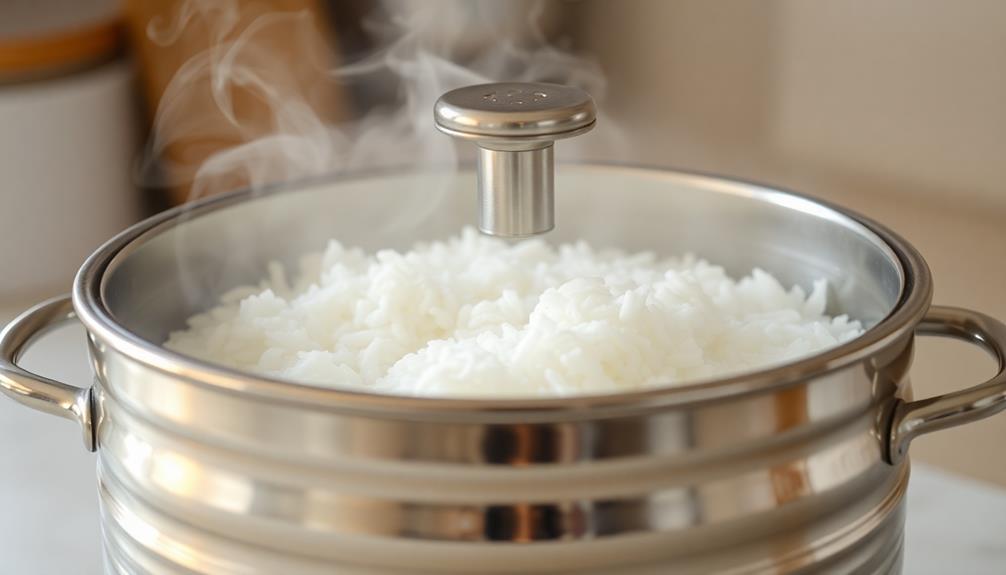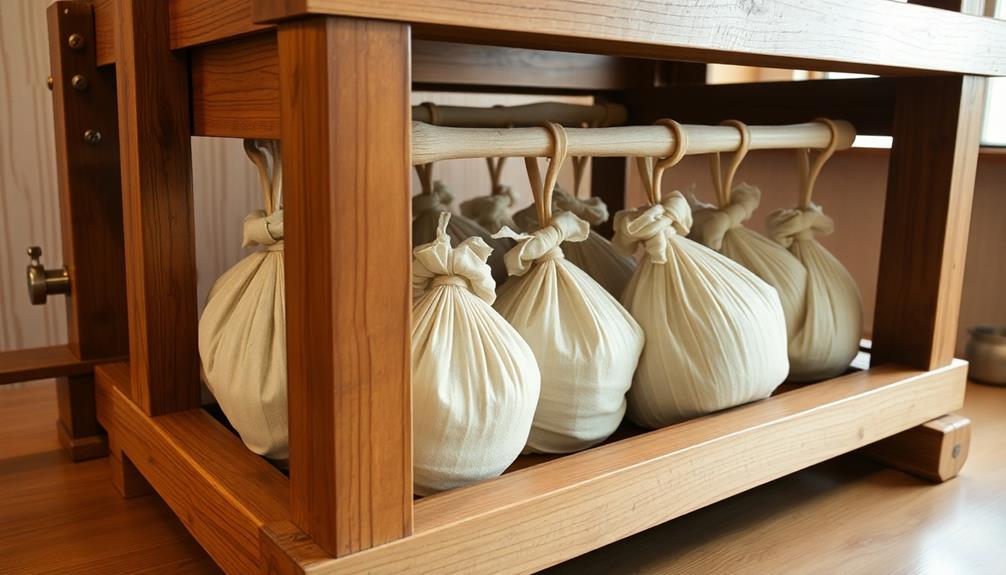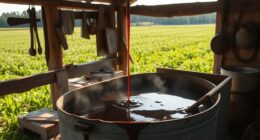Sake, Japan's national treasure, has captivated the world with its rich history and diverse flavors. Tracing back to the 8th century, this beloved beverage evolved from a religious offering to an integral part of Japanese culture. The meticulous brewing process, combining traditional techniques and modern innovations, creates a wide range of taste experiences. From crisp junmai to robust daiginjo, each batch presents unique characteristics reflecting the terroir and craftsmanship of Japan's skilled brewers. Sake's versatility extends beyond sipping, with its ability to enhance the flavors of various dishes. Dive deeper into the legacy and global impact of this remarkable drink. Sake’s global popularity has not only inspired a deeper appreciation for Japanese culture but also fostered comparisons with other beloved spirits, prompting many to explore sake alongside classics like wine and whiskey. As enthusiasts delve into sake’s nuances, they often find parallels in the world of whiskey, where understanding the ‘types of whiskey explained‘ opens up a similar appreciation for flavor, tradition, and craftsmanship. This shared curiosity bridges cultures, highlighting the universal appeal of carefully crafted beverages.
Key Takeaways
- Sake's origins trace back to the 8th century in Japan, with rice fermentation evolving from a religious offering into a popular cultural beverage.
- Sake represents Japan's deep cultural identity, reflecting centuries-old traditions and craftsmanship, and is integral to social gatherings and celebrations.
- The sake brewing process involves meticulous attention to detail, combining traditional techniques with modern innovations to produce diverse flavor profiles.
- Sake's versatility allows for both neat consumption and culinary applications, enhancing the flavors of dishes such as white fish and soy-based sauces.
- Sake's enduring status as Japan's national beverage and increasing global popularity promote cultural exchange and inspire new culinary and mixology experiences.
History
Sake has a rich and storied history that dates back to the 8th century in Japan. It all began when Japanese people started fermenting rice to make this unique beverage. Over the centuries, sake production techniques evolved, and different regions developed their own distinct styles.
By the Edo period in the 17th century, sake had become an integral part of Japanese culture. Brewers experimented with new ingredients and methods, creating a wide variety of flavors. Sake even played a role in religious ceremonies and special occasions.
Today, there are over 1,800 sake breweries in Japan, each crafting their own signature brews. From its humble origins to its modern-day prominence, sake's history is a fascinating tale. The dedication and artistry of sake brewers have preserved this beloved national drink for generations.
Exploring sake's history provides a glimpse into Japan's rich cultural heritage.
Recipe
Sake, Japan's national beverage, is a versatile and complex drink that can be enjoyed in a variety of ways. While sipping sake neat is a popular method, it can also be used as an ingredient in various dishes, elevating the flavors and adding a unique depth.
One such dish that showcases the delightful interplay between sake and food is a simple yet elegant sake-steamed fish. This recipe harnesses the subtle sweetness and umami notes of sake to create a tender, flavorful seafood dish that's both comforting and refined.
Ingredients:
- 4 fillets of white fish (such as sea bass, halibut, or cod)
- 1 cup of high-quality sake
- 2 tablespoons of soy sauce
- 1 tablespoon of mirin (Japanese rice wine)
- 1 inch piece of fresh ginger, peeled and thinly sliced
- 2 scallions, sliced into 1-inch pieces
- Salt and pepper to taste
Cooking Instructions:
In a large shallow pan or steamer, combine the sake, soy sauce, mirin, and ginger. Bring the mixture to a gentle simmer.
Carefully place the fish fillets in the pan, making sure they're submerged in the sake mixture. Cover the pan and steam the fish for 8-10 minutes, or until the fish is cooked through and flakes easily with a fork.
Transfer the fish to a serving plate and drizzle the cooking liquid over the top. Garnish with the sliced scallions.
When cooking this dish, it's important to use a high-quality sake to ensure the best possible flavor. Additionally, be mindful not to overcook the fish, as the delicate texture can become compromised.
Serve the sake-steamed fish with steamed rice or a simple salad for a complete and harmonious meal.
Cooking Steps
First, you'll steam the rice in a specialized pot.
Then, you'll inoculate the steamed rice with koji, a special mold.
Next, you'll let the inoculated rice ferment for several weeks.
After that, you'll press the fermented mash to extract the precious liquid.
Step 1. Steaming Rice in a Specialized Pot

To make sake, you'll need a specialized pot called a "koshiki" for steaming the rice. This pot is designed specifically for the sake-making process. It has a unique shape and size that helps create the perfect texture and moisture level in the rice.
First, you'll measure out the precise amount of rice needed. Then, you'll rinse the rice thoroughly to remove any impurities. Next, you'll transfer the rice to the koshiki and add the right amount of water.
The koshiki's design traps the steam, gently cooking the rice to perfection. Steaming in the koshiki takes around 30-45 minutes. You'll want to keep a close eye on the pot, adjusting the heat as needed to maintain the ideal temperature.
Once the rice is cooked, it'll be ready to move on to the next step in the sake-making process. With patience and attention to detail, you'll end up with beautifully cooked rice, the foundation for creating Japan's beloved national beverage.
Step 2. Inoculating the Steamed Rice With Koji

After steaming the rice in the specialized koshiki pot, the next crucial step is to inoculate the rice with koji. Koji is a special mold that's essential for making sake. You'll need to sprinkle the dried koji spores evenly over the warm, steamed rice. This allows the koji to grow and spread throughout the rice, converting the starch into sugars that the yeast can then ferment.
It's important to maintain the ideal temperature and humidity levels during this process. The koji needs warmth and moisture to thrive. You'll carefully monitor the mixture, making sure the koji is growing as it should.
After a few days, the rice will be covered in a white, fuzzy layer – that's the koji doing its job! With the rice now inoculated, you're one step closer to creating that delicious, one-of-a-kind sake. The flavor and aroma to come will make all the care and attention worthwhile.
Step 3. Fermenting the Inoculated Rice

With the rice now inoculated, the next step is to begin fermenting the mixture. This is where the magic really happens!
You'll take the koji-covered rice and add a few more key ingredients to start the fermentation process.
First, you'll need to add water and a yeast starter called shubo. The shubo helps kickstart the fermentation, allowing the yeast to feast on the sugars in the rice. As the yeast works its way through the mixture, it produces alcohol – transforming the rice into sake!
Over the next few weeks, the concoction will steadily ferment, with the yeast converting the starches into alcohol. You'll need to regularly stir the mixture to ensure even fermentation. It's an intricate dance, but with patience and care, you'll soon have a batch of delicious sake ready to enjoy.
The fermentation stage is crucial, so be sure to monitor it closely. With the right touch, you'll unlock the incredible flavors that make sake such a special Japanese treasure.
Step 4. Pressing the Fermented Mash

Once the fermentation process is complete, you'll need to press the thick, mash-like mixture to extract the precious sake liquid. This step is crucial, as it separates the clear, flavorful sake from the leftover solids.
You'll use a specialized press, which applies gentle pressure to gradually release the liquid. As the sake flows out, you'll collect it in a container, ensuring none of the valuable elixir is lost.
The pressing process takes time and patience, but the results are well worth it. You'll see the rich, amber-colored sake emerge, ready to be filtered and bottled.
This step is the final stage before the sake can be enjoyed, so take your time and relish the moment. With each drop that's collected, you're one step closer to experiencing the full depth and complexity of Japan's national beverage.
Step 5. Filtering the Pressed Mash

The pressed sake mash now requires careful filtering to refine the liquid into its final, pure form. This is a crucial step, as it removes any remaining solids and impurities, ensuring the sake is crystal clear and ready for the next stage of production.
The filtered mash is slowly and gently poured through a fine mesh strainer or cloth. This allows the clear liquid to pass through while trapping the remaining rice solids and other particles.
The filtered liquid is then transferred to a holding tank, where it's allowed to settle further, leaving any last traces of sediment behind.
This meticulous filtering process is essential for producing the clean, smooth flavor profile that sake is renowned for. It's a delicate dance, requiring patience and a keen eye to ensure the final product meets the high standards expected of Japan's national beverage.
With the mash now beautifully filtered, the sake is one step closer to reaching its full potential.
Final Thoughts
Ultimately, sake's enduring legacy as Japan's national beverage speaks to its deep cultural significance. This centuries-old drink has become woven into the fabric of Japanese identity, representing the country's rich history, traditions, and unparalleled craftsmanship.
From its humble beginnings as an offering to the gods to its current status as a global phenomenon, sake has captivated the hearts and palates of people around the world.
As you've learned, the intricate process of sake brewing is a true art form, requiring meticulous attention to detail and a deep understanding of natural fermentation.
Each sip offers a unique flavor profile, reflecting the terroir, rice varietals, and techniques employed by the dedicated brewers. Whether you're savoring a crisp, refreshing junmai or indulging in a robust, full-bodied daiginjo, the depth and complexity of sake never cease to amaze.
Ultimately, sake's enduring legacy as Japan's national beverage speaks to its deep cultural significance. This centuries-old drink has become woven into the fabric of Japanese identity, representing the country's rich history, traditions, and unparalleled craftsmanship.
Frequently Asked Questions
How Long Does Sake Typically Last Once Opened?
Once you've opened a bottle of sake, it'll generally last about 1-2 weeks when stored in the fridge. The key is keeping it cool and away from direct light to preserve its flavor and quality.
What Are the Common Food Pairings for Sake?
When it comes to sake, you can pair it with a wide variety of foods. Common pairings include sushi, sashimi, grilled meats, and even spicy dishes. The subtle flavors of sake complement many Japanese cuisine staples.
Can Sake Be Stored in the Refrigerator?
You can certainly store sake in the refrigerator. Chilling sake helps preserve its flavor and aroma, making it a great way to enjoy your favorite Japanese rice wine for longer.
How Is the Alcohol Content of Sake Determined?
The alcohol content of sake is determined by the rice polishing ratio, yeast strain, and fermentation process. The higher the rice polishing ratio, the higher the alcohol content, typically ranging from 15% to 20%.
What Are the Different Classifications of Sake?
Sake has several classifications based on factors like brewing method, rice type, and alcohol content. You'll find categories like junmai, honjozo, ginjo, and daiginjo, each with distinct flavors and characteristics.










